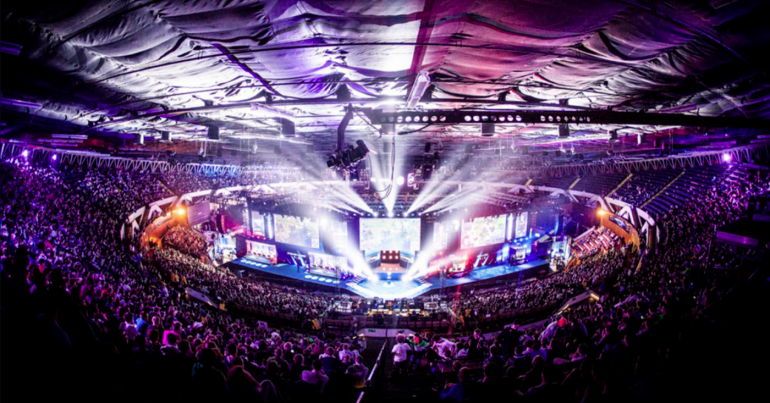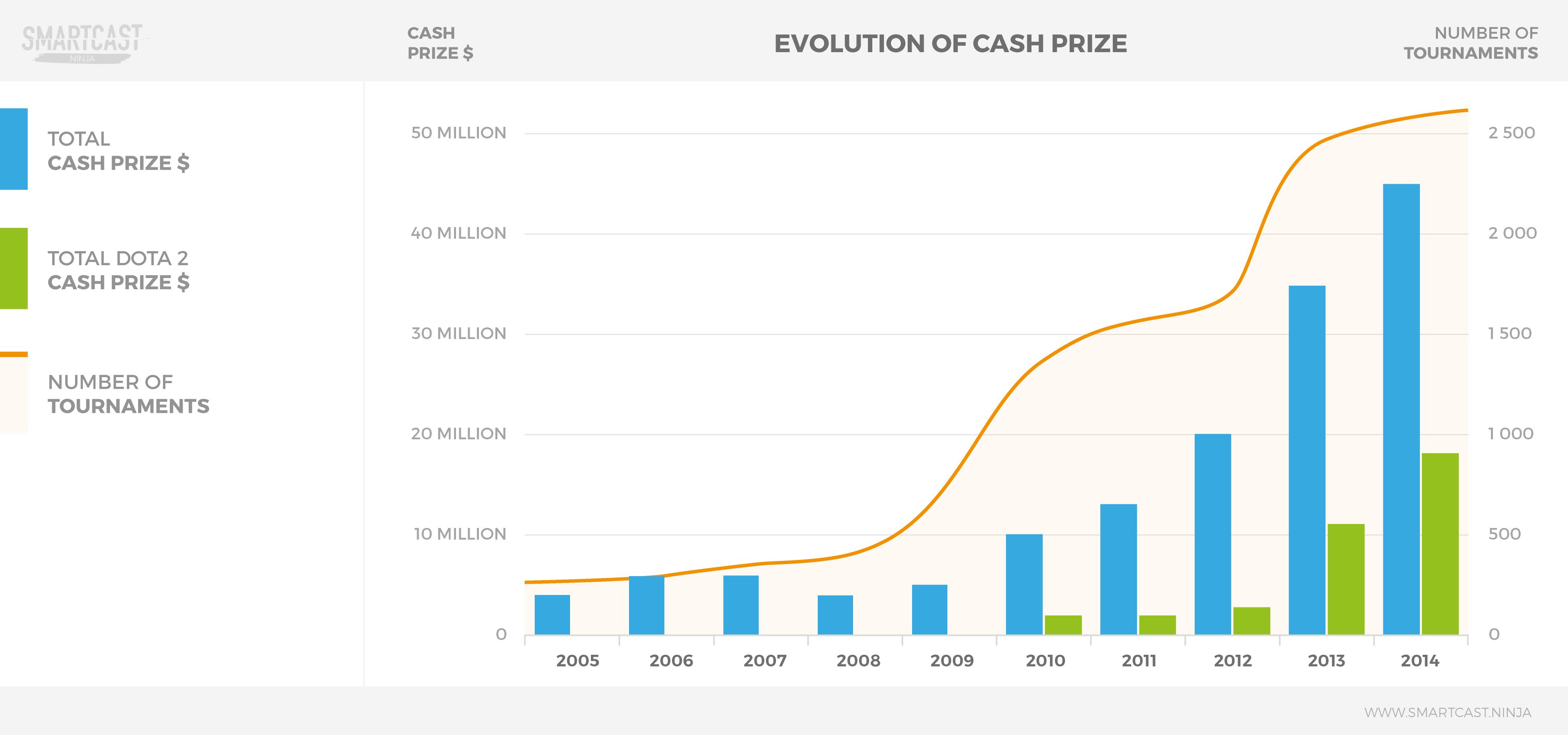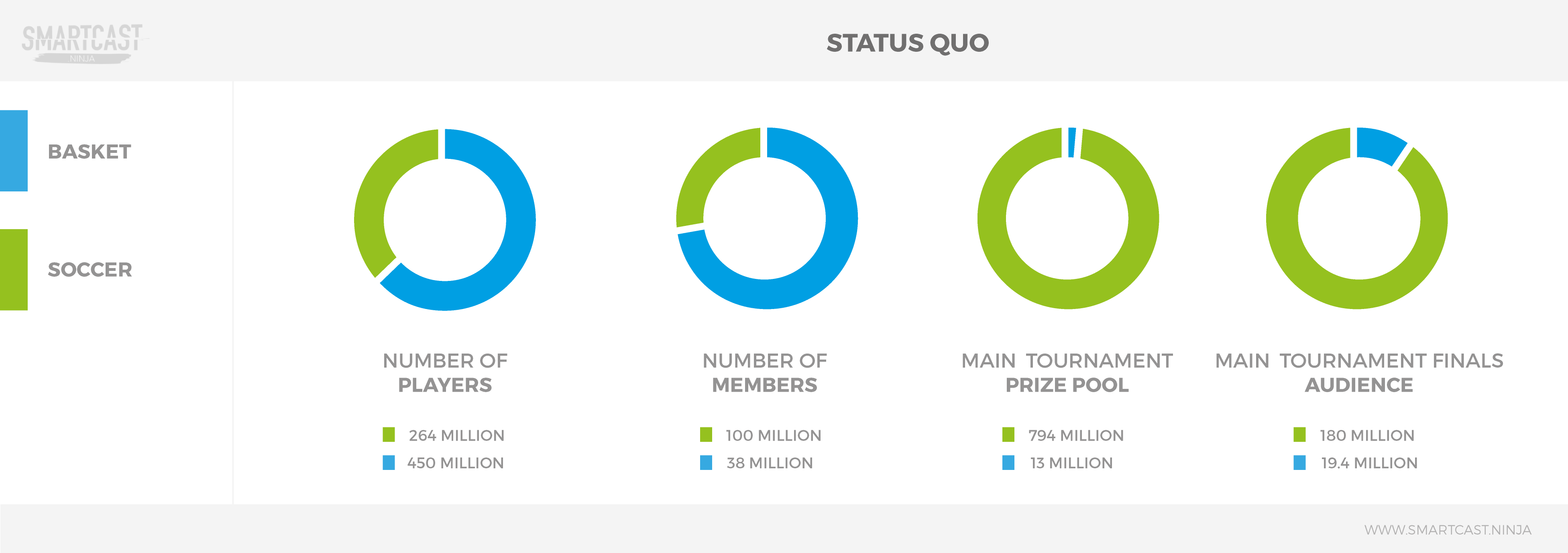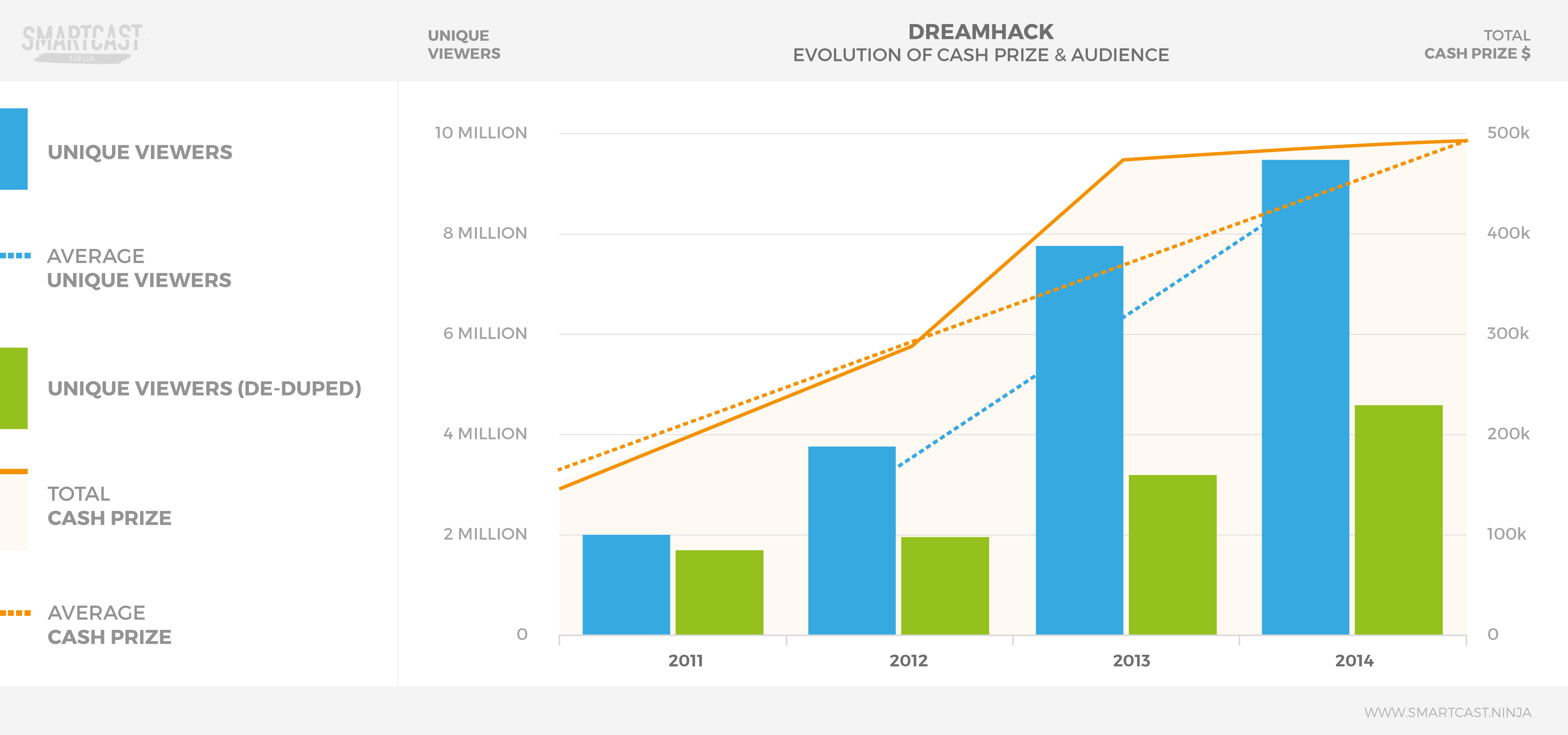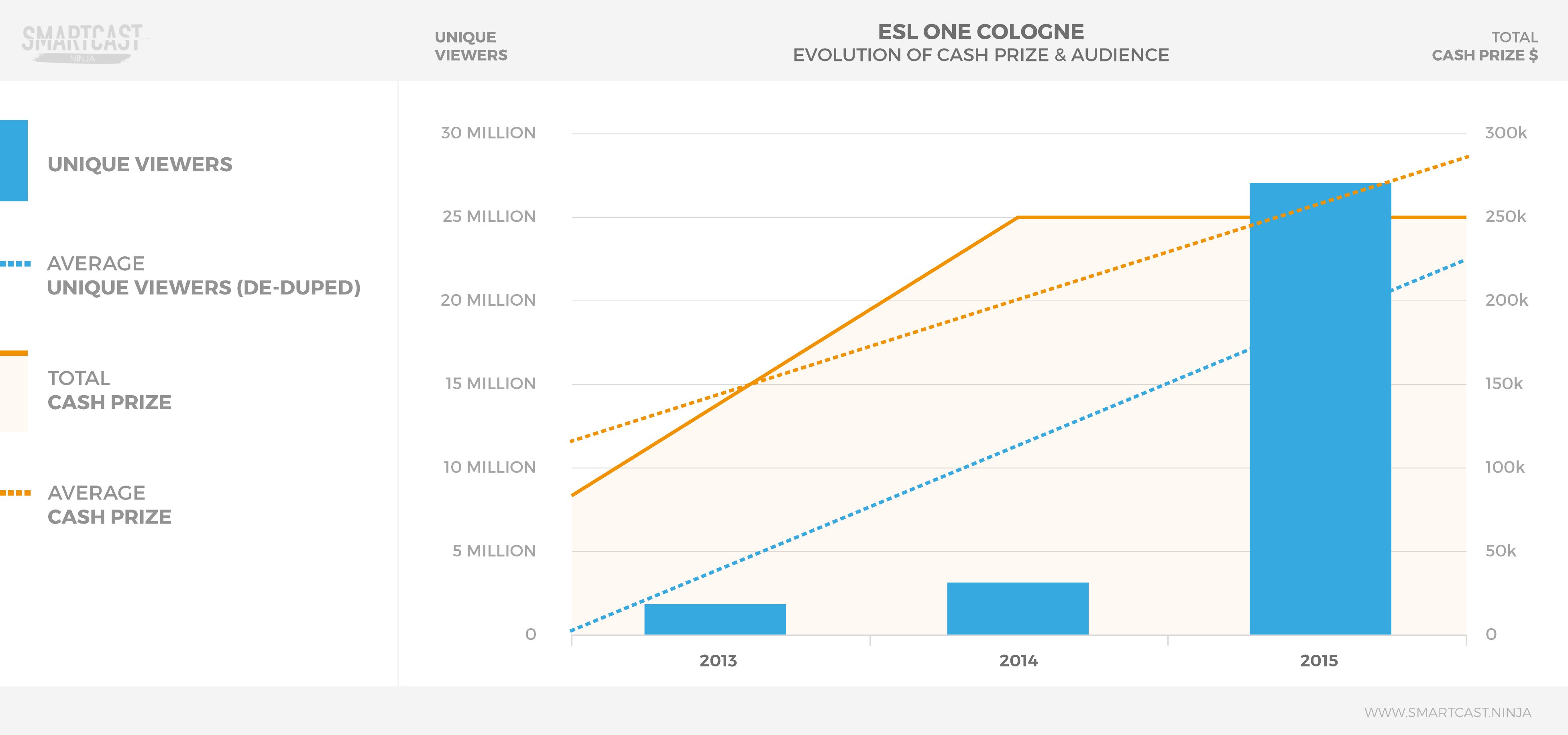There are always tons of questions where the answers a hard to formulate. What comes first? The chicken or the egg? Lag or disconnect? Cash or audience? From what we can see of the evolution, no, the explosion of all our eSport related figures this last question can make one wonder. A sort of secret recipe or even a philosopher’s stone for “marketers”! So what do you think: is it the audience of a tournament that increases the cash-prize or the cash-prize that attracts the audience?
Sommaire
Debate
Some will instantly shout out that the cash prize comes first, using The International as an example of this. The specificity of this Dota 2 tournament is that, year after year, it is the most lucrative of the eSport season. For its 2015 edition, the best players shared 18 million dollars. If Valve, the editor and organizer of this competition is not very talkative about the audience numbers of this event, the few we have found lying around the web would indicate that over 20 million people watched Dota 2’s prized competition in 2014. On the other hand, others will talk about the League of Legends tournament where the winners could only share 2 million cash prize and yet there were 27 million people watching it in 2014.
However without its 18 million dollars that has so many journalists talking about it, would The International have as much impact? Without the frequent and massive investments throughout the season, would so many fans watch the League of Legends finals? Are we on to something here? Is there really a link between cash prizes and audience numbers? The answer is obviously more complicated than just that but don’t fret, SmartCast is here to help.
Observation
First let’s set the records straight – the “eSport” phenomenon is clearly on the move! Tournament investments are constantly increasing: $44 405 877 for the current year. The overall audience which is so difficult to quantify is also on the rise. Newzoo, the agency specialized in video games market studies mentions 147 millions occasional spectators for the year 2015. Not bad for a year that is far from over…
The organizers, public and specialized press tend to give cash prize huge importance and significance at every competition. But why give tournament cash prize such value? Traditional sport rarely exhibits similar amounts. Knowing how much NBA or league of champions winners earn is it really that important? Will this information change your view on things or influence your choice of programs to watch? It doesn’t look like it…
Electronic competition is still young. In less than 10 years the number of tournaments has gone from 281 annual tournaments to about 2 565 competitions for 2015 (the season is still ongoing). That’s an average of 7 tournaments a day! So for one competition it’s even more important to stand out, and cash prizes is the perfect way to do this: be different, make sure the best teams come and, in the case of The International, get traditional media to talk about you as they love huge numbers and world records. We could say that the cash prize is a marketing asset before anything else. The NBA and the Champions League are both major championships of their respective disciplines and yet no organizer would be mad enough to try and de-throne the competition run by the UEFA. One could suppose cash prize would have no influence on the audience… and yet the comparison is surprising.
Edifying – There are 2 times more basketball players than football players and yet the trend is reversed when we talk about audience with 10 times more spectators for the Champions League than for the NBA. Is football a sport made to be watched? Without drawing any speedy conclusions and because it’s very hard to quantify such a huge phenomenon, we have taken a close look at several of the most important eSports events worldwide. DreamHack, ESL One, ESWC or IEM… We are trying to include as many multi-disciplinary competitions as possible as they often have a wider international scope. Everything has gone through the SmartRay.
Dreamhack
The DreamHack winter takes place every year in Jonkoping, Sweden and is one of the biggest player reunions on the planet and is a national event. Every new edition has over 20 000 gamers attending the party.
First thing to note: from 2011 to 2013 the DreamHack Winter has increased the amount of prizes given to players. At the same time the number of spectators boomed upwards. However the fact that the cash prizes have barely changed between 2013 and 2014 has not stopped the increase in audience. For the organizers it’s the ability to bring in some of the best teams available. Some players have a truly huge fan base that organizers absolutely must learn to seduce. For Thomas Lyckedal, Head of Esport for the DreamHack, this is something that’s very important:
“I think that the cash prize is a very important factor but not the only one. We do not see any clear relationship between having a big cash prize and attracting a big audience. This may be the case from time to time. But it can also be caused by other factors. If you invite good players to play and take car of their travel expenses, you can still hope to attract a good number of viewers.“
Tomas Lyckedal, Head of Esport, DreamHack
Evolution Championship
The Evolution Championship, the biggest fighting games tournament was, up to 2013, underneath the average in terms of cash prizes compared to other tournaments of equal standing. Efforts were made, increasing the prize from $62 000 to more than $303 500. We also note that since then the audience has more than doubled.
ESL One Cologne
However when cash prizes stay the same from one year to another, the audience can also change as demonstrated by the DreamHack. The ESL One is also a prime example of this. Since the end of the ESL Major Series and moving up to the new format of major competition with the “ESL One” and $250 000 in cash prize, the competition has completely changed. The organizers have decided to leave the ESL studios, then the exhibition center in Cologne, to finally settle in the Cologne exhibition center: the Lanxess Arena. This is followed by a huge success on the audience’s side with over 27 million spectators for the event. A real record.
League of Legends – Worlds Championship
And as for League of Legends, its case is special. With nearly 70 million players, it’s one of the most played games in the world. If the massive investments made between 2011 and 2012 allowed the League of Legends Championship to get to the next milestone, this trend is not the same for Riot’s following competitions. We can see that the cash prize has not evolved in the last 3 years and nevertheless the audience has been increasing in an astonishing fashion. So what influence on cash prize?
Smite – a case study
Smite is a MOBA type game, and in our study it’s a very interesting case. Edited by Hi-Rez Studios, the game came out in March 2014. Trying to enter an already saturated environment, Smite wants to compete in the same category as Dota or League of Legends: a huge challenge! As the game was still in beta, Hi-Rez decided to organize a worldwide championship with over one million dollars cash prize. Just like The International and Dota 2, fans could buy a pack of skins and goodies inside the game and increase the tournament’s cash prize. This operation baptized The Odyssey was a success as the community contributed up to $400 000.
The next year, in January 2015, the Smite Worlds Championship offered the winners over $2 616 610 in cash prize. Hi-Rez Studio also announced that 2 323 780 spectators followed the play-offs in over 25 countries. Moreover, the site Gaming Nexus was already comparing these numbers: “nearly one viewer for every dollar at stake for the players”. Careful though not to draw any early conclusions! Smite tallies over 10 million players. We can subtract all the efforts the editor has put into organizing a competitive circuit over an entire season as well as the show for the finals.
Other factors
Obviously other factors also influence the number of spectators. Electronic sport is an entertainment where many factors come into account. Starting with the quality of the show and the location where this show is hosted. Using a gorgeous theatre, venue or even stadium can give a tournament a whole new dimension. Multiplying channels of communication and streaming is a bonus to increasing the audience. Classic media channels exist such as streaming platforms or television broadcasting, others are more innovating. Several editors (Riot, Valve, Hi-Rez etc.) have included a TV or live widget right into their game menus allowing players to connect directly to the show and big competitions.
An innovation that could help boost audiences. In the latest Counter Stike tournaments, the number of spectators viewing the live show directly from their games often goes over one million people. The advantage here is to redirect the players directly towards his own competition. Agendas, rarity, marketing campaigns and many other coefficients come into this to add complexity to the equation for organizers but it would be impossible to pin point them all here.
It’s now time to conclude this post, we must give you a final answer and here is SmartCast’s conclusion. The cash prize is indeed a factor that can increase the viewership of a tournament. It’s a marketing tool that, up to a certain level – at least $250 000 right now (this will increase with time) – can attract the best players and therefor captivate the community. A bigger investment can act as a lever to break down some barriers: in the example of The International for example, it can help get more spectators than there are Dota 2 players. On the other hand a stagnation or diminution in cash prize does not necessarily mean a drop in audience numbers.
There you go, now you know!
Translation – James Berry
Graph – Hugo Brionne


